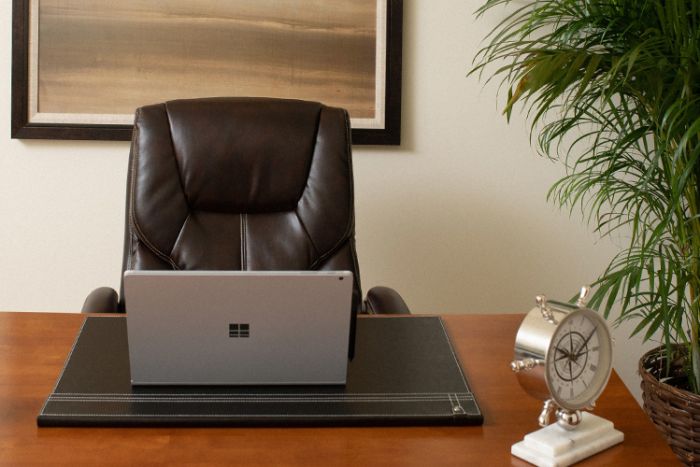Since 1994, June has been celebrated as Men’s Mental Health Month. Men are less likely to make their mental health struggles known. Millions of men struggle with depression, anxiety, bipolar disorder, and more. Men are also more likely to commit suicide compared to women1. The stigma associated with men’s mental health contributes to these statistics. That’s why in June we spread awareness to help all men heal and get the treatment they deserve.
Along your recovery journey, you can find strength in words of wisdom from other men who have also overcome challenges. Inspiration spurs motivation. You can overcome your mental health battle.
25 Quotes to Inspire and Live By
“Mental health problems don’t define who you are. They are something you experience. You walk in the rain and you feel the rain, but you are not the rain.” — Matt Haig
“If a man’s mind becomes pure, his surroundings will also become pure.” – Buddha
“The greatness of a man is not in how much wealth he acquires, but in his integrity and his ability to affect those around him positively.” — Bob Marley
“There is nothing wrong with being afraid – but there is nothing more wrong than allowing that to be your master.” — Bobby Darin
“Regardless of who you are or what you do for a living or where you come from, it doesn’t discriminate. We all kind of go through it.” — Dwayne “The Rock” Johnson
“Darkness cannot drive out darkness; only light can do that. Hate cannot drive out hate; only love can do that.” — Martin Luther King Jr
“The heart of man is very much like the sea; it has its storms, it has its tides, and in its depths, it has its pearls too.” — Vincent Van Gogh
“Men are not prisoners of fate, but only prisoners of their own minds.” — Franklin D. Roosevelt
“The real man smiles in trouble, gathers strength from distress, and grows brave by reflection.” — Thomas Paine
“Try not to become a man of success, but rather try to become a man of value.” — Albert Einstein
“You don’t have to control your thoughts. You just have to stop letting them control you.” — Dan Millman.
“Since that day [I opened up about my emotions], it’s just been so much easier to live and so much easier to enjoy my life.” — Michael Phelps
“There is nothing noble in being superior to your fellow man; true nobility is being superior to your former self.” — Ernest Hemingway
“To have become a deeper man is the privilege of those who have suffered.” Oscar Wilde
“Mental health is not a destination, but a process. It’s about how you drive, not where you’re going.” — Noam Shpancer
“Do not pray for an easy life. Pray for the strength to endure a difficult one.” — Bruce Lee
“We need men who can dream of things that never were.” — John F. Kennedy
“Nearly all men can stand adversity, but if you want to test a man’s character, give him power.” — Abraham Lincoln
“The true measure of a man is how he treats someone who can do him absolutely no good.” — Samuel Johnson
“The first step to be a good man is this: You must deeply feel the burden of the stones some else [is] carrying.” — Mehmet Murat ildan
“Waste no more time arguing about what a good man should be. Be one.” — Marcus Aurelius
“All progress takes place outside the comfort zone.” — Michal Joan Bobak
“A creative man is motivated by the desire to achieve, not by the desire to beat others.” — Ayn Rand
“Only a man who knows what it is like to be defeated can reach down to the bottom of his soul and come up with the extra ounce of power it takes to win when the match is even.” — Muhammad Ali
“One man with courage makes a majority.” — Andrew Jackson
Men’s Mental Health Treatment
Men’s-Only Rehab
You don’t have to struggle in solitude. Various treatment options address the unique challenges men face during addiction and/or mental health issues. There are several men-only programs.
Gender-specific centers empower their clients to tap into natural strengths. You’ll grow by exploring new ideas enabling continued self-growth. And gender-specific treatment is tailored to your needs. For example, Sunshine Coast Health Centre caters to mens’ mental health needs through non-12-Step programming and a focus on healing with dignity. Little Creek Recovery in Pennsylvania uses adventure therapy and 12-Step philosophy to help men recover. In the world of men-only rehab, the options for gender- specific rehab are boundless.
Burnout and Stress
Men in high-pressure jobs can often experience burnout and stress. While this may be something you’re used to, this does not have to be permanent. Symptoms can get worse if you ignore them. Getting help for your burnout can ground you and give you a new perspective on life. J. Flowers Health Institute, for example, heals burnout with concierge care and unique services like brain mapping and wellness programs.
Dual diagnosis
When you experience two disorders simultaneously, like bipolar disorder and addiction, this is what we call dual diagnosis, or co-occurring disorders. Treatment centers like Soberman’s Estate, a men’s-only facility, can determine the root cause of your co-occurring disorders. They offer 3+ individual talk therapy sessions per week to discover how your disorders impact one another, and they also include on-site holistic activities like equine therapy to create a well-rounded program. Dual diagnoses can be complex, but the right care can lead you to success.
Eating disorders
Eating disorders affect everyone, including men. Often, it’s harder to spot these patterns in men because they’re less likely to ask for help. That’s why Men’s Mental Health Month is so important: so we can spread helpful information and resources2 to those who need it. Finding the right care is essential for overcoming your eating disorder and living freely. Newport Academy Washington State offers eating disorder treatment for adolescent boys. They focus on having fun in recovery with activities like hiking and skiing. They also offer family therapy and academy support.
Realizing Your Power
Whatever difficulty you’re facing right now, you don’t have to go through it alone. Whether it’s Men’s Mental Health Month or not, you can always prioritize healing. Discover the man you want to be by exploring and connecting with rehabs for men.
Transformation begins within. Here are some ways to prioritize your mental health now:
- Make time for self-care
- Talk to a mental health professional
- Connect with others
- Exercise regularly
- Solidify a good sleep routine
- Eat a balanced diet
- Practice M3H: Mindfulness/Meditation/Movement/Hydration













